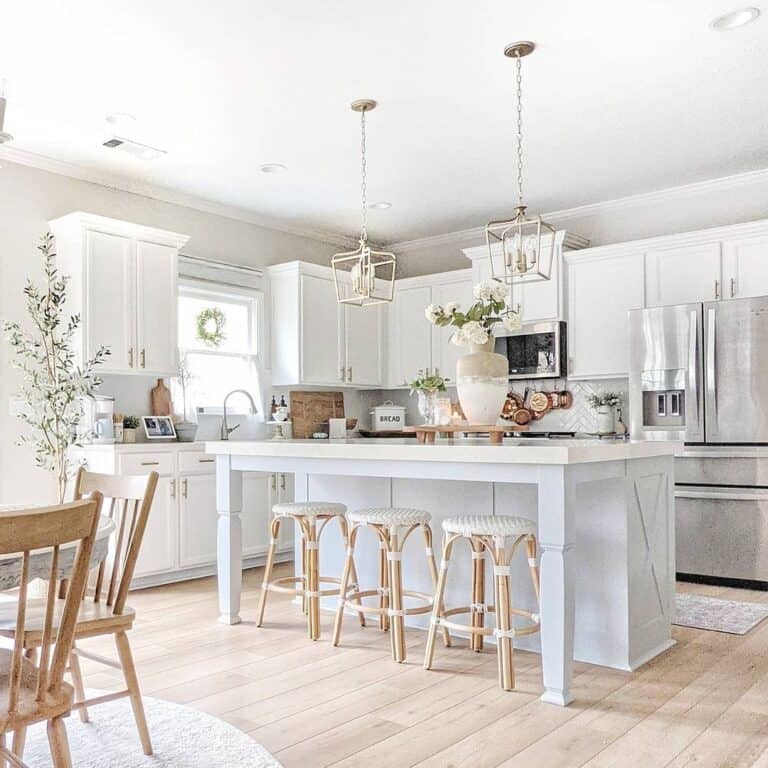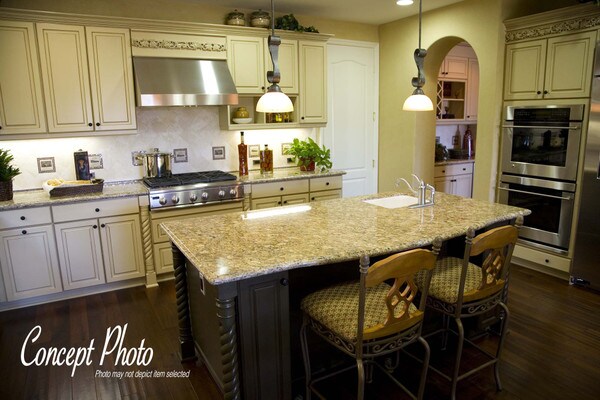Maximize Flexibility with Flexible Legs For Kitchen Island Attributes
Key Considerations for Locating the Finest Legs For Kitchen Area Island for Your Design
When picking the ideal legs for your cooking area island, numerous crucial factors to consider come right into play that can dramatically influence both functionality and appearances. The selection of height, product, and style need to align with your general kitchen design to ensure an unified look.
Determine Your Style Preference
Identifying your style choice is vital when picking the suitable legs for your kitchen island. The legs of your cooking area island not just serve a useful objective however additionally contribute substantially to the overall visual of the space. Recognizing your layout style-- be it contemporary, rustic, standard, or industrial-- is necessary.
For a modern cooking area, think about sleek, minimalistic legs that enhance open rooms and clean lines. Traditional cooking areas typically favor transformed or ornate legs, which can include a touch of beauty and sophistication.
In addition, consider the height and proportion of the legs in connection to the island's surface area. Inevitably, your style preference will influence not only the choice of legs however likewise the total consistency of your cooking area's style.
Choose the Right Material
Choosing the ideal product for your cooking area island legs is crucial in ensuring both resilience and aesthetic charm. Different materials provide unique advantages, and the option typically shows your style preferences and practical requirements.
Wood is a popular choice, providing heat and convenience. It can be tarnished or repainted to match your cooking area decoration, making it adaptable to different styles, from rustic to contemporary. Wood may call for normal maintenance to preserve its look and honesty.

If you seek an one-of-a-kind touch, consider acrylic or glass materials. They can create an impression of room and agility in your cooking area, making them an outstanding selection for smaller sized areas - Legs For Kitchen Island. These choices might call for careful handling and upkeep to stay clear of scrapes.
Ultimately, the material you select must straighten with your kitchen's general style, ensuring that the legs serve both attractive and useful purposes.
Think About Height and Percentages
When designing a kitchen island, height and proportions play an important function in making sure performance and convenience,. The common elevation for a cooking area island commonly varies from 36 to 42 inches, straightening with traditional counter heights or bar elevations, specifically. This measurement is essential for harmonizing with surrounding stools and counter tops, enabling ease of usage throughout dish prep work and social interactions.
Additionally, the island's proportions need to match the overall kitchen layout. Consider the ratio in between the island's width and size, guaranteeing it gives sufficient surface location without crowding the cooking area.
In addition, the elevation of the legs or base can affect the aesthetic charm and performance. Taller legs may lend a more modern-day, airy feeling, while much shorter ones can evoke a typical, grounded look. Ultimately, meticulously considering elevation and proportions will lead to a kitchen island that is both aesthetically enticing and functionally efficient, enhancing the overall design of the space.
Assess Stability and Resilience
A kitchen island's legs should not only complement its height and proportions however likewise offer sufficient stability and durability to sustain day-to-day tasks. The legs are vital to the total capability of the island, as they birth the weight of the countertop and any type of extra tons, such as devices or cooking tasks.
When examining stability, it is essential to consider the leg layout and material. Tough steel or strong wood legs usually provide remarkable toughness compared to lighter materials like engineered timber or plastic. Furthermore, a wider base can improve security, minimizing the threat of tottering or tipping during use.
Durability is equally vital; the legs need to withstand damage from day-to-day use. Consider surfaces that secure against scrapes, dents, and dampness, especially in a kitchen setting. Review the high quality of building, such as fastenings and joints, which can considerably affect the legs' lasting performance.
Ultimately, spending in well-crafted legs that prioritize stability and resilience will ensure your cooking area island remains a trusted office try this website for several years to find, improving your cooking experiences while maintaining visual allure.
Consider Upkeep and Treatment
Maintenance and treatment are important considerations for ensuring the durability and efficiency of kitchen island legs. When selecting legs, it is important to evaluate the products made use of, as various options require varying levels of maintenance. Wood legs may call for periodic refinishing or sealing to avoid moisture damages and scrapes, while metal legs might require normal brightening to maintain their sparkle and prevent corrosion.
In addition, the finish put on the legs can affect maintenance demands. A high-gloss layer might be easier to tidy yet could reveal scrapes and fingerprints a lot more conveniently than a matte coating. It is suggested to pick materials and finishes that match your way of life; as an example, if you frequently hold celebrations, choose durable products that can hold up against damage.
In addition, consider the cleaning procedure associated with maintaining these legs. Smooth surface areas commonly call for marginal effort, while detailed layouts may accumulate dirt and crud, demanding even more labor-intensive cleansing approaches. Legs For Kitchen Island. Inevitably, considering the maintenance and treatment needed for your selected kitchen area island legs will certainly not only improve their aesthetic appeal but likewise ensure their practical honesty over time
Verdict
In final thought, choosing the optimum legs for a cooking area island necessitates cautious factor to consider of different aspects, consisting of design style, material choice, security, elevation, and maintenance. Each aspect plays an essential duty in guaranteeing that the legs not just improve the visual allure of the cooking area but additionally provide the required support and resilience for site here everyday usage. A knowledgeable choice will inevitably add to a functional and aesthetically pleasing cooking area setting.
The legs of your kitchen area island not only serve a functional objective but also add substantially to the general aesthetic of the space.Upkeep and care are crucial considerations for guaranteeing the long life and efficiency of cooking area island legs. Wooden legs might need regular refinishing or sealing to avoid dampness damages and scratches, while metal legs might need routine polishing to preserve their luster and protect against corrosion.
Inevitably, factoring in the maintenance and care needed for your selected kitchen island legs will not only improve their visual charm but additionally guarantee their practical honesty over time.
